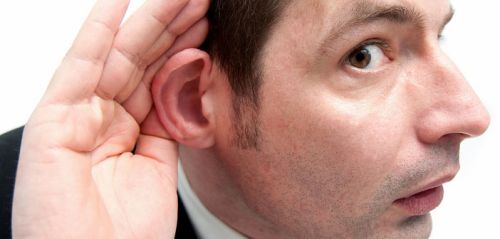When in school or college, we avoided taking note, believing that we can remember all that is being talked about in the lecture. Though we sincerely paid attention to what was being taught, we could not recall much, later. This is not just the case in school or college, try and remember the list of groceries that was discussed in the morning breakfast table. This is not exceptionally a case with you, researchers says that humans fail to remember and recall things that they hear. In short, humans have poor memory for what we hear, than what we see or touch.
Researchers at University of Iowa has discovered that humans have poor memory to recall the sound they hear, than the memory for things that are perceived through vision or touch. And this may be reason why we fail to remember a particular song that we heard even a little while ago.
UI graduate student, James Bigelow, who is also the lead author of the study says that we believe that the brain parts are connected to memory, however our brain uses different modus operandi to process the information. Amy Poremba, corresponding author on the study and associate professor in the UI Department of Psychology said that the findings even proposed that the brain uses a different way, such as mental repetition to process auditory information and for easy recall in the future and opt different procedure while processing visual or tactile information.
Bigelow and Poremba for the study exposed more than 100 UI undergraduate students to numerous distinct sounds, visuals and things that could be touched and found that the students could hardly remember sounds that they were made to hear.
To test the short term memory, the students were made to hear out tomes through headphones, observe a number of shades of red colored squares and made to hold an aluminium bar to feel the low intensity vibrations. Each of these tones, squares and vibrations had a time gap of one to 32 seconds.
With continued time delays, students memory declined and the decline was more pronounced for sounds and started as early as four to eight seconds after the students were exposed to them.
Bigelow and Poremba also conducted memory tests using things that the students see or hear on a daily basis, such as audio of dogs barking, muted recordings of a baseball game and felt objects such as a coffee mug with their eyes covered.
And as expected, researchers found that between an hour or week’s time, students failed or struggled to recall sounds that they heard, however the visual or tactile memory for objects they had seen or felt, was still fresh and they could remember just about same.
These tests conveys that the procedure through which brain process and stores sound, differs from the way it uses to store memories for visual or tactile objects. In another experiment where non-human primates such as chimpanzees and monkeys underwent the same test, researchers found that even they, similar to humans could easily remember things that they had touched and visualized and had tough time remembering sounds.
Researchers based on these findings postulate that the human’s inability to remember audios has its origin in the way the primate brain has evolved.
The findings can be of major importance for teachers, design engineers and advertisers. During classroom teaching or training, teachers need to engage other methods than just audio or speech for more effective learning experience.




